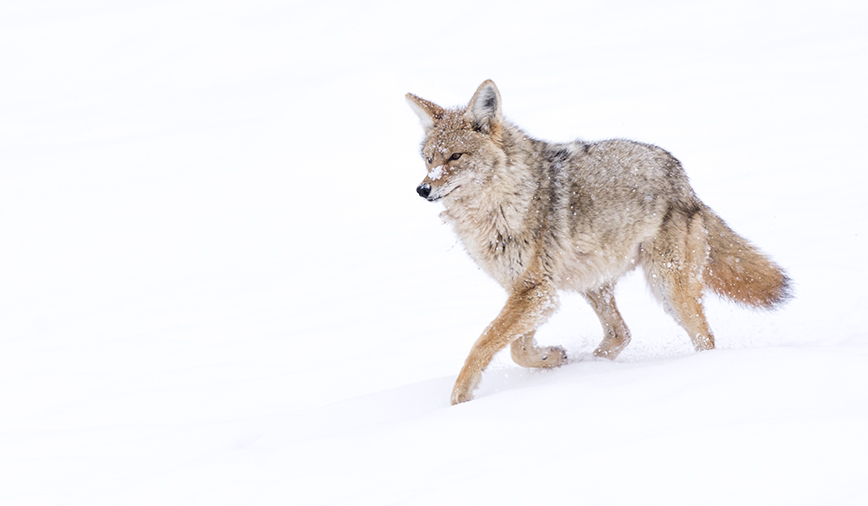Pam’s Perspective
From the…
Pam Otto is the Manager of Natural Programs and Interpretive Services for the St. Charles Park District
February 25, 2013
The other night my friend Suzi hosted a 31 Bags party. And while of course the focus of the evening was, for most people, the wonderfully functional bags and their myriad uses, I couldn’t quite get my mind off one thing: the array of delectable appetizers and snacks Suzi had set out in the next room.
Veggies and hummus—yes! Trader Joe’s Wild Blueberry and Vanilla Goat Cheese—yum! Jumbo shrimp, and cocktail sauce—yay! And, my favorite, bagels and vegetable-flavored cream cheese from Jake’s Bagels and Deli in Aurora—a mound of heavenly, doughy deliciousness. Yippee!
There’s no doubt, sometimes it is fun to have appetizers and snacks instead of a full meal.
Which is exactly how a lot of our local carnivores are sustaining themselves this winter.
Our lack of snowcover has meant a lack of hiding places for mice and voles—nature’s snacks and appetizers. Instead of scurrying around in the relative safety the subnivean layer, that open space that lies between the ground and the snow, rodents such as white-footed mice and meadow voles have had to forage out in the open, day after snowless day.
Even this past week’s heavy dusting didn’t make much of a difference. I saw a vole on Friday chugging along beneath the white coating left by “Winter Storm Q” Thursday night. If you can envision a kitten cavorting beneath a blanket, you’ll have a good vision of the commotion this little guy created.
Subtle, he was not.
To remain undetected, subtlety, and even stealth, are of the essence. But, let’s face it, most rodents are anything but.
Some animals use speed as a survival tactic, but this too is a no-go for rodents. Their scampering may make them look fast, but it’s not a sustainable pace. A few quick dashes and they need to rest. When their resting place is the middle of an open field or yard—places that offer little or no cover—it usually means hasta la vista, little herbivore.
Then there’s the way rodents feed. The main part of their diet is seeds and plant material, which they consume while digging and scratching about. This foraging technique is effective, but hardly invisible—nor inaudible.
Once they’ve found something edible, they have to chew it. If even our second-rate human ears can detect a mouse or vole gnawing on nut shells or seed husks, just imagine how loud that nibbling must sound to a coyote, fox, hawk or owl—creatures whose hearing is up to 10 times as sensitive as our own.
With an abundance of easy-to-find snacks and appetizers—er, natural prey—available, local carnivores have had a relatively easy go of it this winter, at least as far as food supplies are concerned.
Also on Friday, not long after I saw the tunneling vole, a handsome and hefty red-tailed hawk swooped past by office window, perhaps in pursuit of the little burrowing beastie. And my coworker Jeanette informed me of a coyote that had come sniffing around the birdfeeders just an hour or two before my vole sighting.
Bistro Rodentia is open for business.
I’m hoping to make time this weekend, while we still have a wee bit of snow on the ground, to get out and look for more signs of hunting activity. Following fox or coyote tracks to a vole runway is fun; even better is finding wing imprints from a hawk or owl that swooped down in pursuit of prey.
But first, I think I’ll have a snack.

